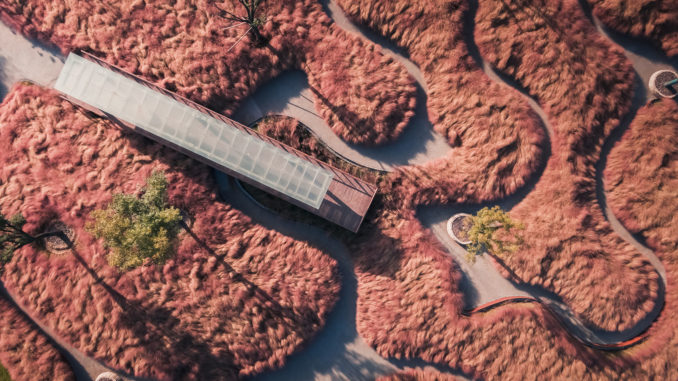
Surrounded by the ‘Xi’an International New Area’ development zone, Feng River Park is an 880,000sqm stretch of remediated public parkland along the western bank of the Feng River, Xi’an in Shaanxi Province, central China. Located at the origin of the Silk Road, Xi’an , is one of China’s four ancient capitals and continues to play a pivotal role in the nation’s growth. Over centuries of urbanization the banks of the Feng have been stripped of the once vibrant ecological and cultural amenity.
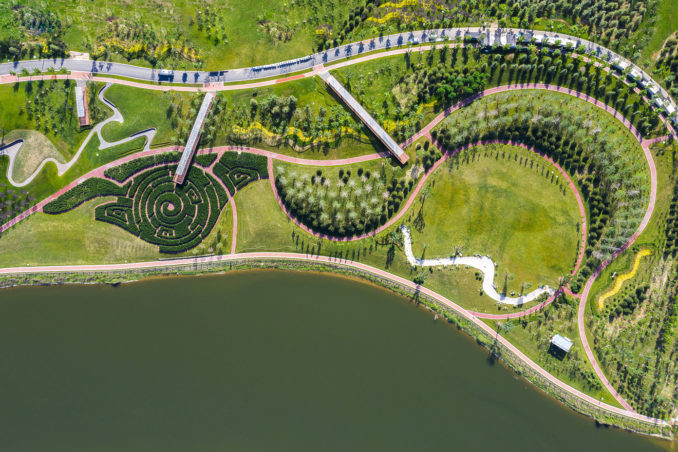
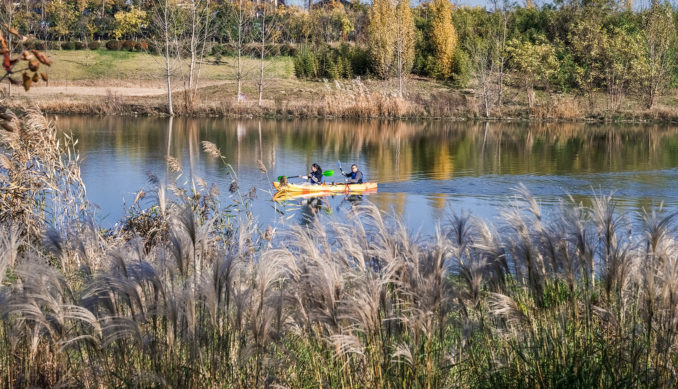
Feng River Park reverses this trend by leveraging future development as a catalyst for rich environmental and cultural remediation. To achieve this, the project team delivered three key themes that underpinned each stage of the urban design, landscape architecture and construction phases. These were, Ancient River Channel, Hidden Poetry” to tie in the Feng River’s ancient history throughout the design process; “Sustainable ecology, Seasonal Experience” for ecological diversity, unique landscape experiences and water sensitive design; “Innovative Infrastructure, Micro Tourism” to design a new model of park tourism that can feasibly exist prior to the planned future developments.
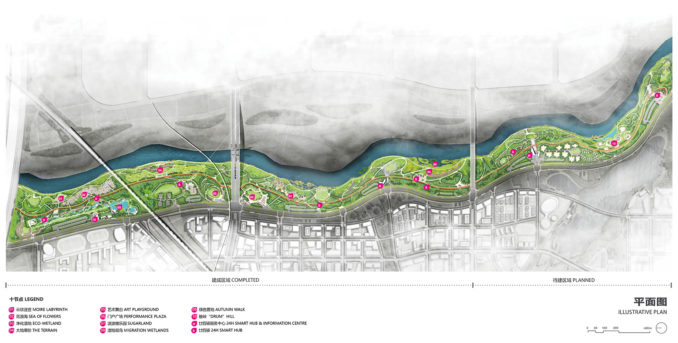
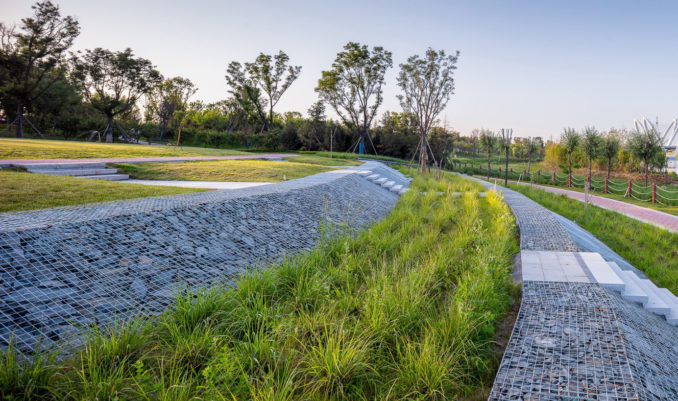
Ancient River Channel
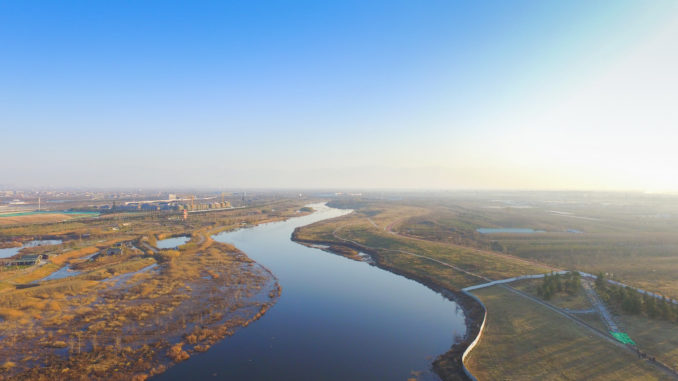
During the Western Zhou Dynasty 1045-771 BC, two ancient cities Fengjing and Haojinng populated the banks of the Feng River leaving behind a rich cultural heritage. It was here that “Shih Ching” or “ The Book of Songs”, China’s earliest collection of poetry was transcribed. The ancient text comprised of 305 works recorded from all rankings of Chinese Society. Born from the River Feng, the poems are inseparable from the rivers narrative and describe the traditional landscape and lifestyle that once populated the riverbanks. Transforming what have become lifeless grassy shores, the project aims to restore the ecological and social vitality that once blossomed in the area. The design reinterprets the historic river landscapes depicted in the poetry through the reinstatement of local ecologies, seasonal planting and poetically themed destinations across the site, reimagining the poetry’s essence in the parkland.
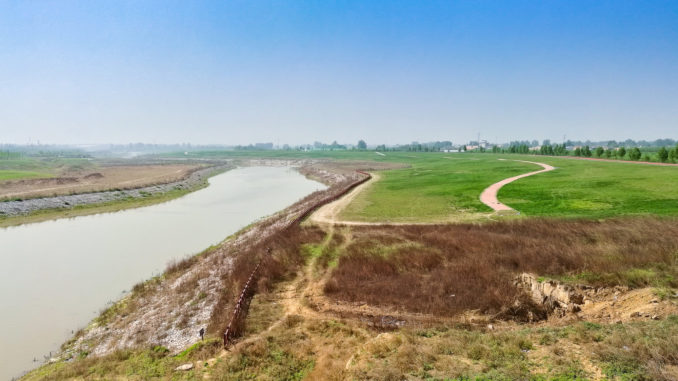
A winding corten wall “The Book of Songs Trail” guides users though these diverse garden typologies, while sharing both ancient and modern scripture, so visitors may draw their own conclusions between the old and new textural interpretations of the “songs” with the surrounding environment. Symbolic
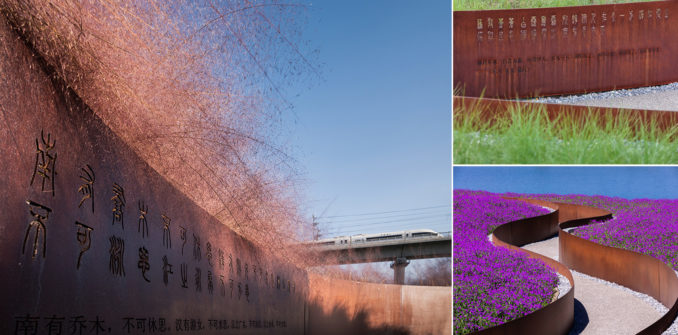
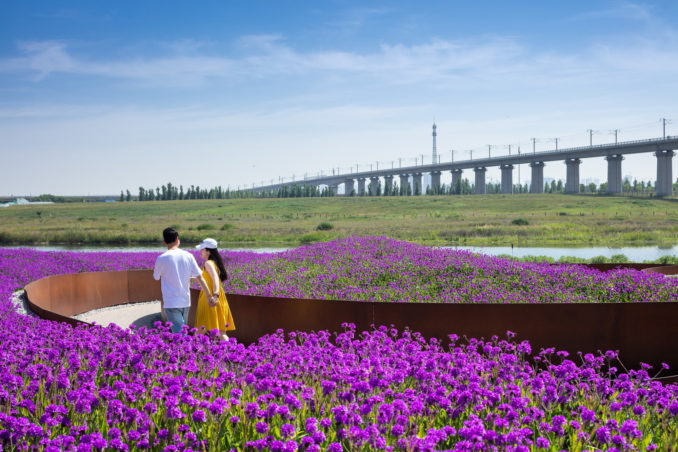
‘Yunleiwen’ patterning from the same era’s bronze artifacts defined by spirals, sharp turns and switchbacks, guide the formation of the sites sinuous central pedestrian circulation. The patterning work with the original topography of the site, undulating terrain and planting to curate a delightful passage of exposure and concealment, evoking a sense of playful hide and seek for all ages. This is best represented in the “Seas of Flower and Grass”, a destination aimed to reflect the romance of “ The Cowherd and The Girl-Weaver” a famous Feng River love story. The seas are most striking during the Autumn Pink Daigo grass bloom, and have become a popular wedding photography destination.
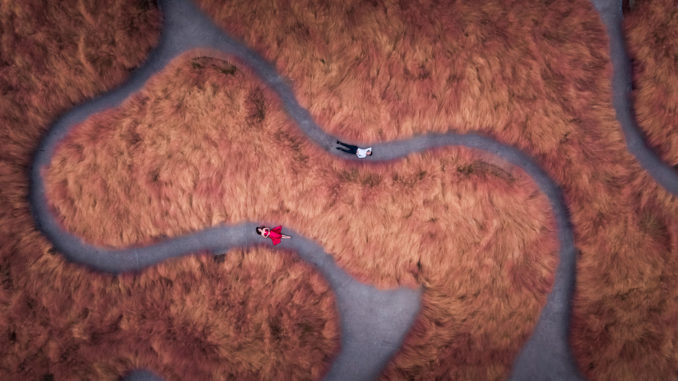
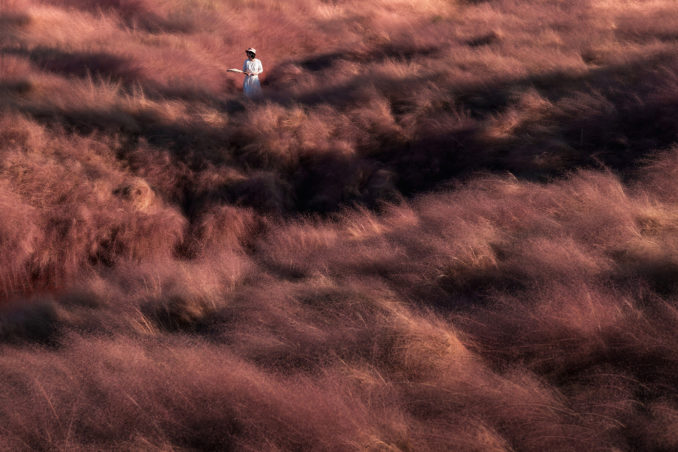
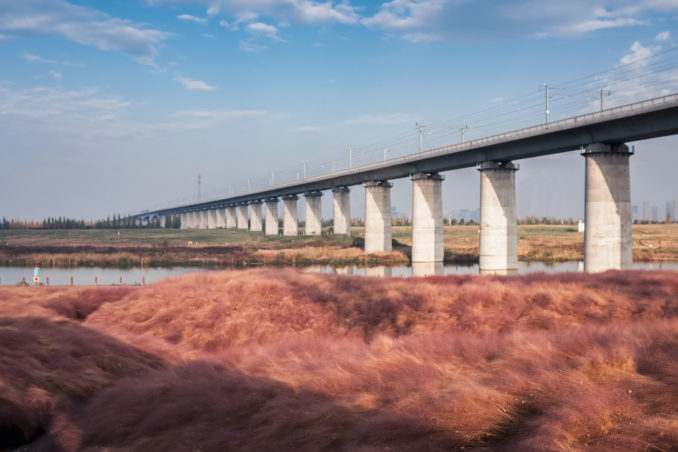
The defining ancient coiled patterning of these spaces showcases the link between local art and the landscape, this is especially evident within the “Moire Labyrinth” where the bronze forms are more traditionally interpreted. This feature hedge maze was designed to encourage explorational play and is popular with local families. These landscape sculptures may be experienced in two key ways, as an art observer from the floating lineal lookouts, or as an active landscape participant within the “living sea”.
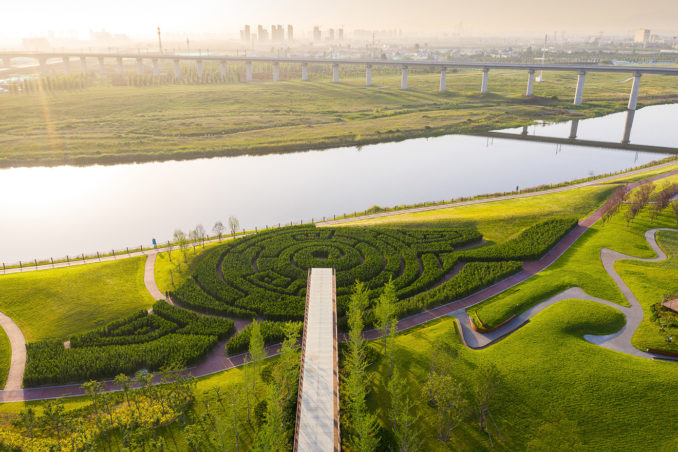
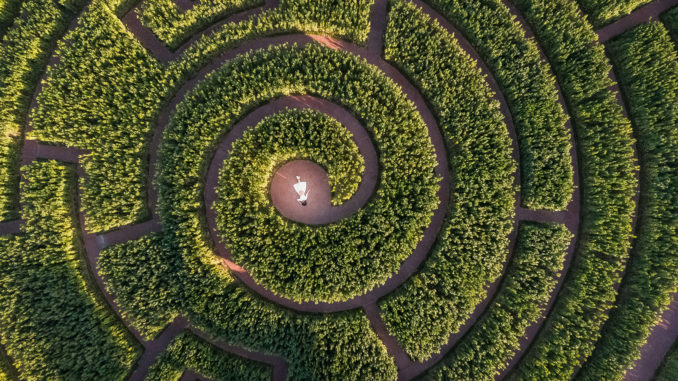
Ecology, Seasonal Experiences
Throughout history the banks of the Feng River have been slowly stripped of their native species and habitats, resulting in grass monocultures and minimal ecological diversity onsite. Restricted by the need to preserve the earth dam banks and walls along the foreshore the Feng River design team aimed to reinstate the botanical and habitat diversity that once thrived. The site today reads as a landscape gallery, showcasing local flora, seasonal change and innovative sponge city design.
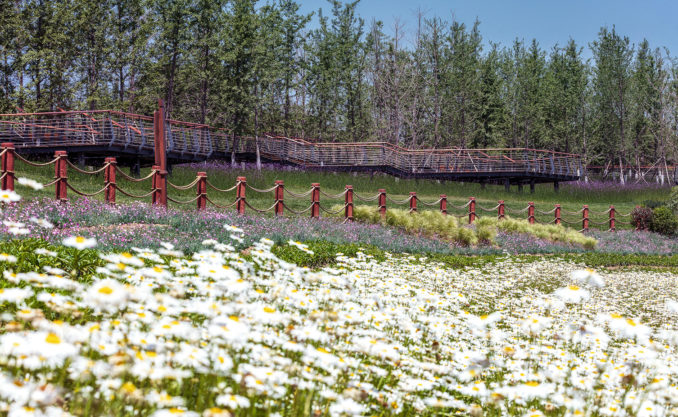
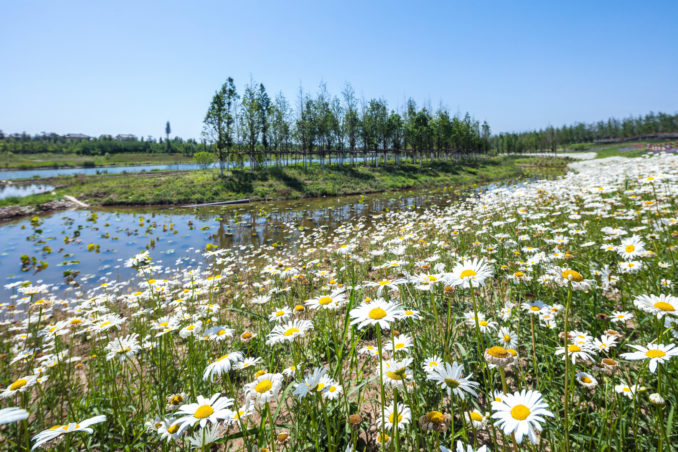
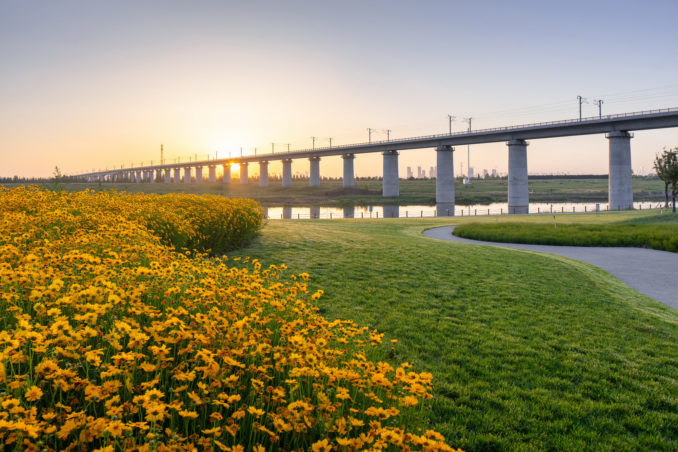
Leveraging the unique native floral palette of Xi’an the landscape becomes a year round landscape exhibition experience. In summer and spring the regions ornamental diversity is on show, blanketing the landscape in flowers. In Autumn, leaves and grasses bring warmth and textural change, defined by falling gingko leaves, and soft pink grasses. In winter, the composition of deciduous trees by species, aims to accentuate the form of their trunks to contrast against a stark, sometimes snow-covered landscape.
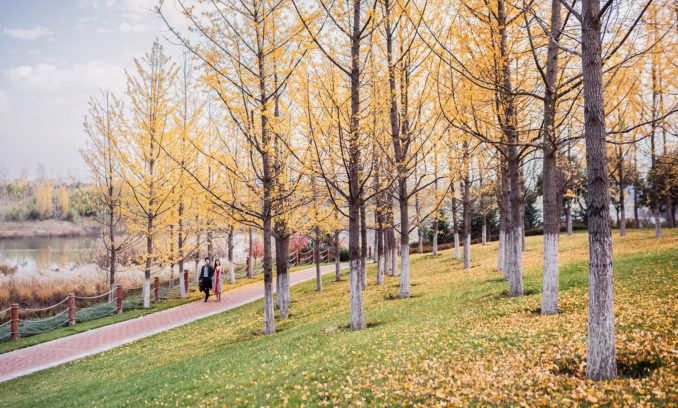
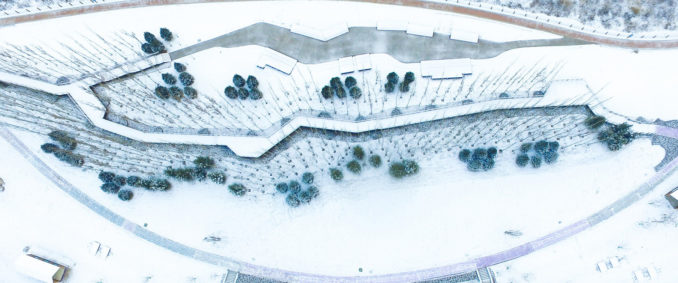
Ecological restoration is further enhanced though sponge city design. Cut and fill techniques are employed to create the micro-landforms which can work as natural sponges. Runoff is captured and filtered onsite though a series of rain gardens, constructed wetlands, bio-swales, infiltration ponds and modular detention tanks and recyclable permeable paving. Water storage is used for onsite irrigation, reducing issues of water scarcity during the dry seasons.
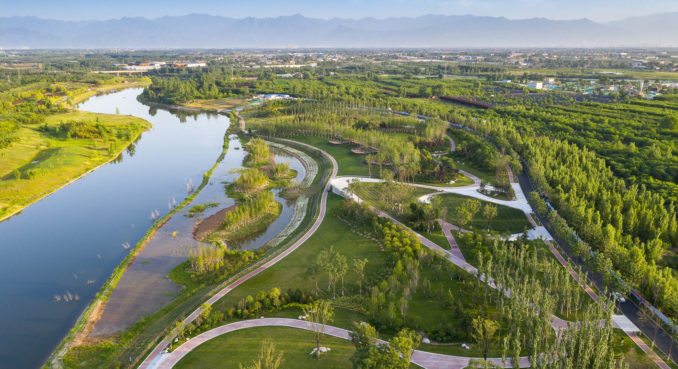
This water sensitive solution ensured a control of 85% of the annual runoff, reducing more than 60% non-point source pollution, and reusing more than 30% of storm water onsite. Flooding and standing water issues onsite were eliminated after construction.
Centered on one of Chinas three major migratory bird pathways, the design enhances the existing tidal wetlands though the use of a rubber cofferdam and rainwater to expand and enhance migratory bird habitats onsite. New island habitats planted with metasequoia and shrubs provide ample resting and refuge places for birdlife. To minimize habitat disturbance, public-access is raised, hidden in groves of native trees to enhance the wildlife viewing experience of Grey Geese, Herion and Mallards from October to March.
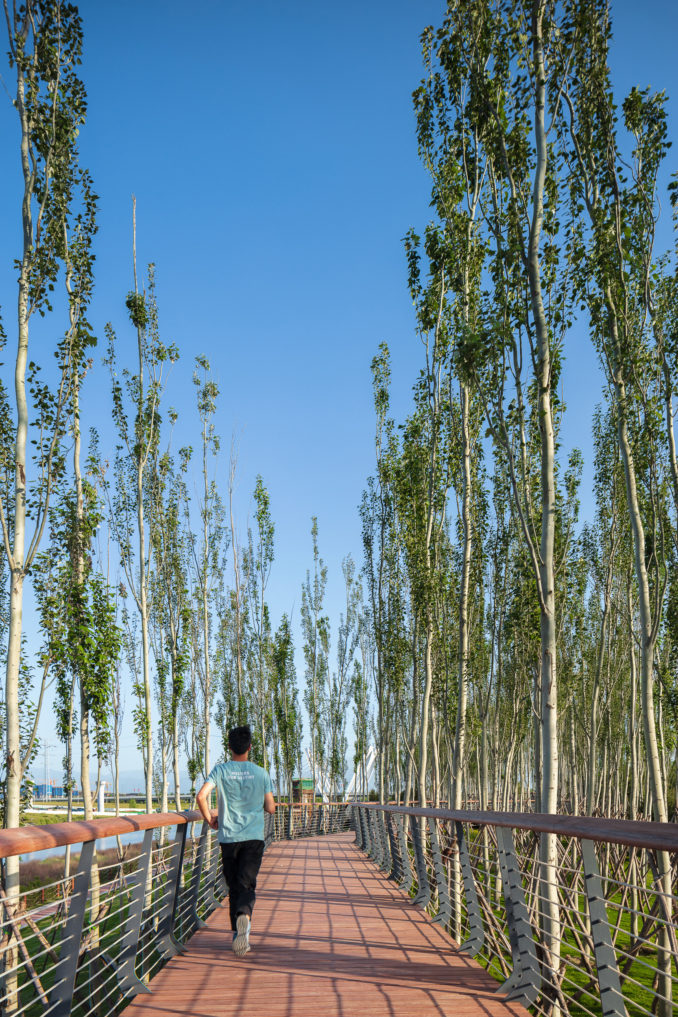
Located in the Xi’an new district, the represents one of the first pilot sponge cities in the country. The design showcases what is be possible for future development. It is hoped that this demonstration of resilience and sustainability will continue to support biological systems as well as influence future development in the area.
Innovative Infrastructure & Micro Tourism
A triple tier walking, biking and running circulation system guides users around and between the diverse parkland setting with experiences along the riverfront. A multimodal access system is delineated with color and material contrast, allowing visitors to experience the park in various ways and speeds. The rear of the park is demarcated by a linear dike road for slow-moving traffic that feeds a series of carparks and key arrival points.
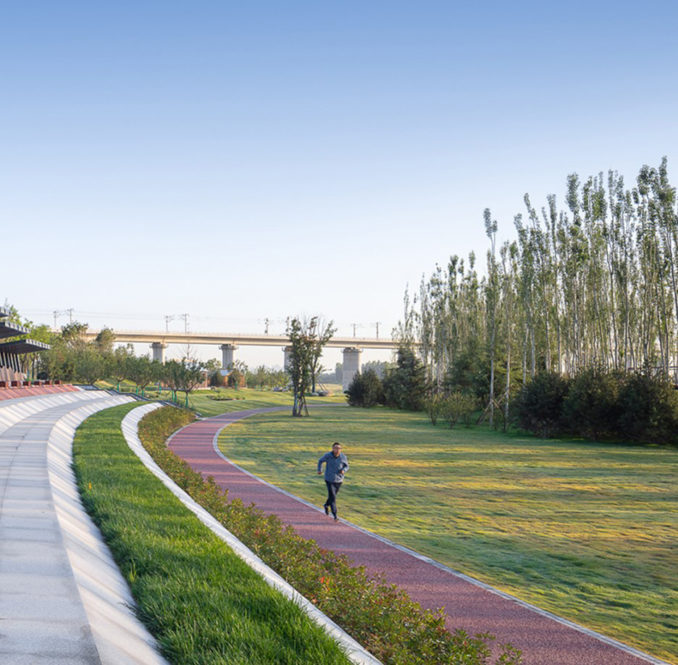
Primary arrival nodes are fitted with dedicated 24Hour Smart Hubs an innovative self-service park infrastructure and wayfinding system that ensures safety and convenience for visitors. The 24Hour Smart Hubs offer a diverse range of utilities including re-charge hotspots for electric vehicles, retail, food and beverage supply, bike hire, event meeting/ event spaces, digital wayfinding/navigation and public amenities. Here visitors can pick up ponchos for wet weather, find picnic spots, buy food and check directories for local events. Bespoke vending machines with site-specific content, the self-service hubs significantly reduces the need for on-site staff or, in some areas, no staff at all. These facilities provide the park with new levels of self-sustainability and automation with minimal management and running costs. The wayfinding and navigation system is designed to feed into other destinations across broader Xi’an, integrating the park within the broader tourism destination network of the city. These are linked to other prominent attractions such as Sugarland, a large regional playground destination for young families. The design leverages the multicolored spectrum of the landscape to provide a kaleidoscopic play experience that will inspire and delight young users, this high impact design draws people from across Xian.
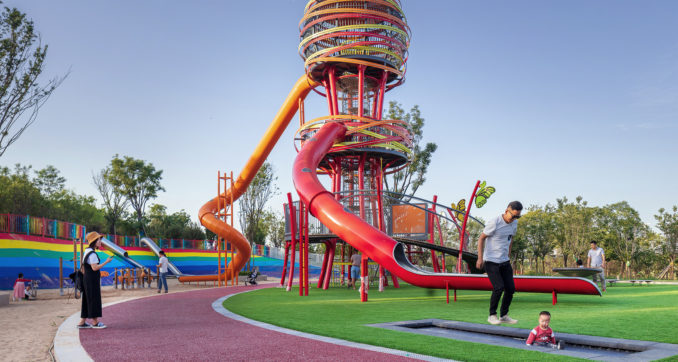
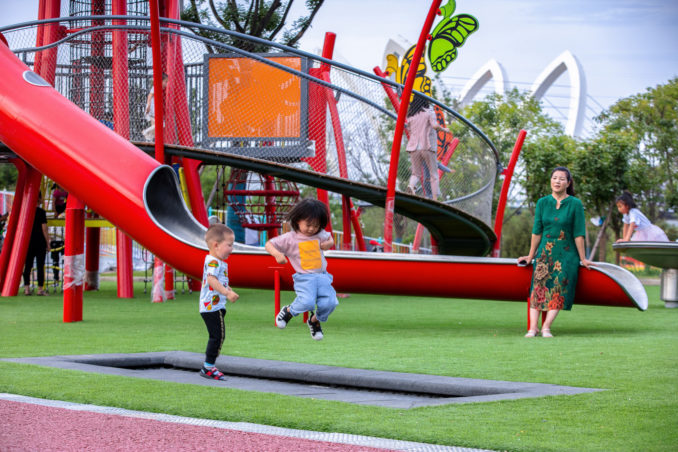



The combination of innovative self-service facilities with social attractions enables the park to function successfully as a stand-alone regional destination. This model sets a precedent for future development, encouraging ecological remediation as a viable the first step in the development process.
Feng River Park
Location | Xi’an International New Area, Shaanxi Province, China
Project Size: 880,000m2
Year | Construction Completion 2019
Client | Shaanxi Xixian Cultural Tourism Industry Group Co.,Ltd.
Lead Consultant | GVL Gossamer
Lead Designers | Gang Liu, Cuiping Wu, Xushuo Luo
Support Team | Zhiyong Liu, Qiujie Lv, Xuanzhao Li, Jie Ma, Yan Gao, Tao Chen, Longsheng Li, Yi Wu, Yanjun Wang, Zhiqiang Sun, Yang Cao, Can Meng, Chunhua Ma, Yueling Chen, Chuyao Gong, Yuhong Lan, Bing Wu, Dong Yang, Ruifeng Lv, Guangsen Zhou, Jingyi Cao, Xiaofen Guan, Zhiping Liu, Qingwen Pan, Yiyu Chen, Lingyan Kong.
Images & Text | GVL Gossamer


